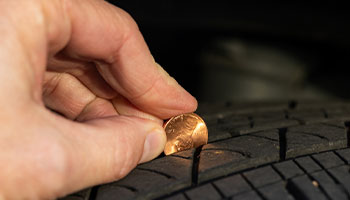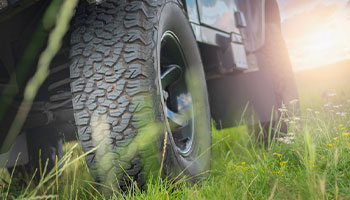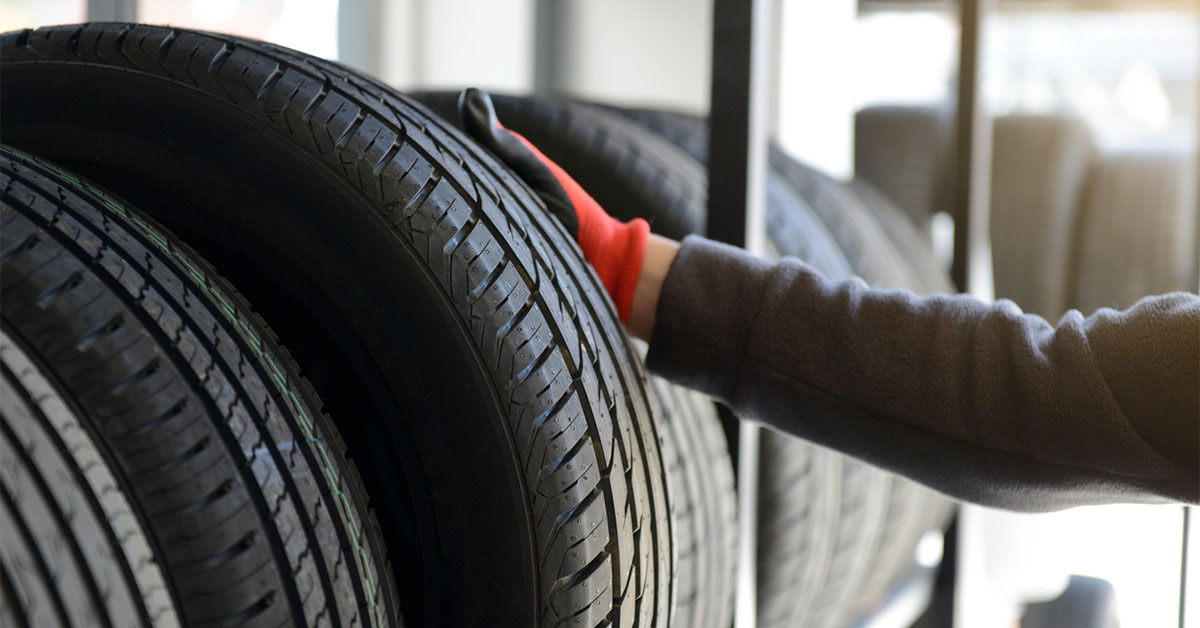Car tires are one of the most important components of your vehicle. Not only do they affect your car’s overall performance, but they also play an integral role in keeping you safe and comfortable on the road. However, despite their durability, car tires don’t last forever. Over time, it’s normal for tires to wear down until they’re no longer safe to use. But how do you know it’s time to purchase new car tires? In this blog, we’ll cover the basics you should know about car tires and when to replace them.
When Should You Replace Car Tires?
According to the National Highway Traffic Safety Administration (NHTSA), you should replace your car tires every 6 to 10 years or 50,000 to 60,000 miles. Although this is the general consensus within the industry, there is no true magic number. Instead, you can rely on a few visual cues that can help you determine if your tires are still safe to use.
Tire Tread Depth
Car tires have grooves (also known as tire tread) which help with traction and bringing your vehicle to a safe stop. On average, new tires have tread depths of around 10/32nds of an inch. As you drive, it’s normal for the tread to wear down over time. But at what tread depth should you replace car tires?

The U.S. Department of Transportation considers tires with tread at 2/32nds of an inch unsafe. Although tires can still function properly at this tread depth, your ability to control your vehicle can significantly decrease, especially in rain or snow. While 2/32nds of an inch is the recommended minimum tread level, you should replace your car tires before they reach such a low level.
Here are three ways you can determine a tire’s tread depth:
- Tire tread gauge – A tire tread gauge is an inexpensive tool that provides you an accurate reading of a tire’s tread.
- Tread wear indicators – Tread wear indicators are raised bumps or bars located between a tire’s treads. These indicators are placed at 2/32nds of an inch, so if they are flush with the tread level, you should replace the tire as soon as possible.
- The penny test – If you lack visual aids or tools to measure tire tread, you can always rely on the quick penny test. To perform the test, grab a single penny, turn it upside down so Lincoln’s head faces down, and place it between your tire’s tread. If you can clearly see his entire head, it’s time to purchase new car tires.
Tire Age
Even with perfect tread, tires can begin to lose durability and degrade as time passes, increasing their likelihood of failure. Weather conditions, storage time, and remaining stationary can all influence a tire’s lifespan, even if you rarely use the vehicle.
Most tire manufacturers recommend replacing tires after 6 years and to never operate a vehicle with tires more than 10 years old. And yes, this includes your car’s spare tire. If your car’s spare is over 10 years old, consider replacing it, even if it looks brand new, to ensure its functionality.
How to Determine a Car Tire’s Age

Thankfully, all tires sold within the United States have a Department of Transportation (DOT) serial number, which identifies the tire’s production date, size, and load rating.
To learn a tire’s age, locate the final four digits of the DOT serial number. The first two numbers represent the week of the year, while the last two numbers represent the year.
So, if a tire’s DOT code ends in 4020, the tire was manufactured in the 40th week of 2020.
What Size Tires Should I Buy?
When in the market for car tires, you’ll quickly notice that your options are endless. But how do you know what size tire to buy? You can refer to your owner’s manual or the tire information sticker on the vehicle’s driver-side door panel to learn more about your car’s tire requirements. Here, you’ll find the vehicle’s original tire specifications, including tire pressure limits. No matter what type of tires you buy, you must ensure they match the original specifications to maintain optimal performance and safety.
Do I Have to Replace All Four Tires at Once?
Ideally, you should always replace all four of your tires at the same time. However, if you run over a nail and blow a hole in a tire, you only need to replace that single tire, right? Well, the answer may depend on the type of car you drive and the condition of the other tires.
Two-Wheel Drive Cars
If you own a two-wheel drive car, it may be possible only to replace one bad tire if the other three still have tread levels of around 8/32nds of an inch. In general, tread levels should never have a difference greater than 4/32nds of an inch, as this can cause traction issues. Still, experts agree that you should at least change tires in pairs if changing all four is not possible. When replacing two tires only, the new set of tires should go on the rear.

All-Wheel Drive Cars
Most manufacturers recommend replacing all four tires at once on all-wheel drive cars. That’s because the difference in tread could cause the wheels to spin at different speeds, which will ultimately cause damage to the vehicle’s drive drain.
Does Auto Insurance Cover Tire Replacement?
Most auto insurance policies will not cover tire damage from normal wear and tear (usually defined as scratches, dents, punctures, cracks, or cosmetic blemishes). However, if you carry collision and comprehensive coverage, you’ll have protection if your tires are damaged due to an accident, theft, or vandalism. In addition, having roadside assistance can provide mechanical aid if you experience tire issues on the highway.
Auto insurance can vary greatly from policy to policy, so it’s always best to speak with an insurance specialist that can answer any questions you may have. To learn more about the coverage available to you, contact our specialists by calling (888) 772-4247 or start your quote online.
The information in this article is obtained from various sources and is offered for educational purposes. Furthermore, it should not replace manuals or instructions provided by the manufacturer or the advice of a qualified professional. No warranty or appropriateness for a specific purpose is expressed or implied.


